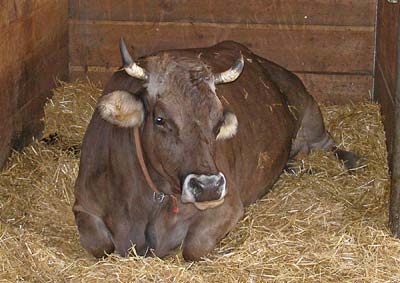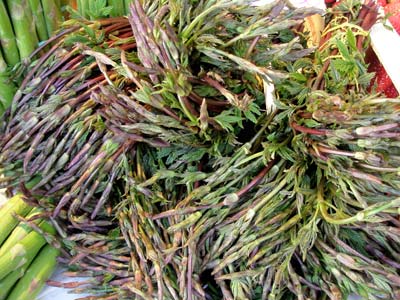
"Brown Alpine." These cattle, primarily used for milk, are numerous in Switzerland, accounting for almost half the stock, and second only to Simmental. They are now widely found throughout western Europe, eastern block countries and Russia. They range in colour from a mousy brown to very dark brown.
Brunello grapes, for a long time thought to be a clone of Sangiovese, but now found to be the same thing. This means that Brunello is the name for Sangiovese grapes in the area of Montalcino in Tuscany.
"Little dark one of Montalcino." A highly regarded, strong, long-lived red wine from Montalcino in Tuscany. It is high in tannin and is made from Brunello grapes, a clone of Sangiovese Grosso. The wine spends at least 3½ years in wooden barrels and is required to have at least 12.5% alcohol. After five years in barrels it may be called 'riserva' and is one of Italy's great red wines. (DOCG).
A dialect name for the black boletus mushroom. Excellent to eat from August to October whether raw in salads or cooked or preserved and also freezes well.
A mixture of different cheeses from Cúneo and Asti mashed together and flavoured, left to ferment and then enriched with grappa and other alcohols to make a powerful piquant cream which can only be savoured in tiny quantities.

"Brushes." A Venetian name for wild hop shoots. They have a short season in Spring and are often used in soups and, famously, in risotto.
A dialect name for butcher's broom. A stiff, evergreen shrub that is both attractive and unusual. It looks a little like a small holly but is actually a member of the lily family. The only monocotyledonous lily, the bitter roots are used in France to make an apéritif called petit-houx. The woody branches of this plant used to be bound into bundles and sold to butchers for cleaning the meat from their chopping blocks.